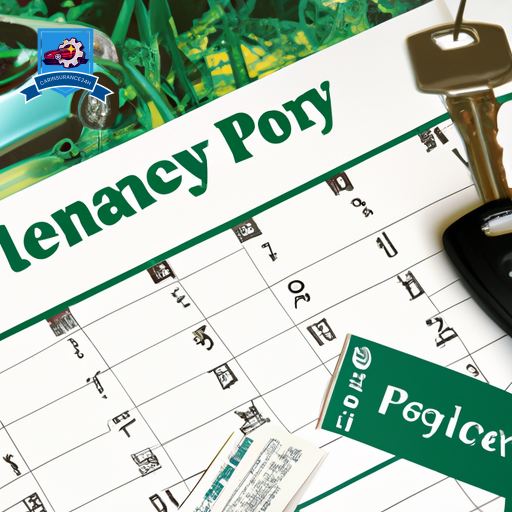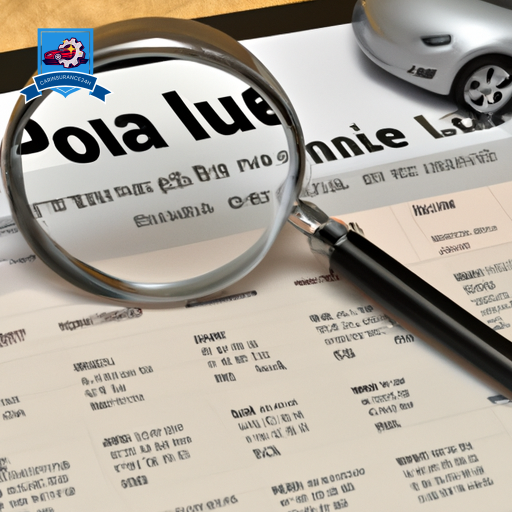Renewal terms for car insurance present a critical juncture for policyholders, offering an opportunity to reassess and recalibrate one’s coverage to make sure it aligns with current needs and circumstances.
As we navigate through the intricacies of understanding renewal notices, evaluating coverage requirements, and comparing policy options, it becomes evident that a well-informed approach can greatly influence the benefits and costs associated with car insurance.
Moreover, decoding policy jargon and negotiating better rates are pivotal steps in optimizing one’s insurance portfolio. Yet, the journey doesn’t end here.
Avoiding common pitfalls and adhering to a thorough renewal checklist will further empower policyholders, setting the stage for a discussion on strategies that can enhance protection and financial savings.
Understanding Renewal Notices

Renewal notices for car insurance are critical communications that inform policyholders about the continuation of their coverage and any changes to their policy terms or premiums. These documents serve as both a reminder of the renewal deadline and an opportunity for policyholders to review their current coverage in light of any alterations proposed by the insurer. Given the significance of these notices, understanding their content and the implications of the renewal deadline is imperative for maintaining uninterrupted coverage.
Notice delivery is a key aspect that policyholders should be attentive to. Typically, insurance companies are required to send out renewal notices well in advance of the renewal deadline—often 30 to 45 days prior—allowing sufficient time for policyholders to make informed decisions regarding their insurance policies. This timeframe is critical as it provides a window for policyholders to assess the terms being offered, including any modifications in premium rates, coverage limits, or additional endorsements.
In the context of ensuring continuous protection, awareness of the renewal deadline cannot be overstressed. Missing this deadline could result in a lapse of coverage, potentially leaving the policyholder uninsured and vulnerable. It is, therefore, advisable for policyholders to mark this date prominently and initiate any necessary communications with their insurer well ahead of time. Proactivity in this regard safeguards against inadvertent lapses in coverage and ensures that policyholders remain adequately insured according to their needs and circumstances.
Evaluating Coverage Needs

As policyholders approach the renewal period for their car insurance, it becomes imperative to evaluate their current coverage to guarantee it aligns with their evolving needs.
This assessment should consider the potential for future financial security, weighing the risks and benefits of maintaining, increasing, or decreasing coverage levels.
Additionally, exploring the advantages of add-on coverage can provide enhanced protection and peace of mind.
Assessing Current Coverage
Before selecting or renewing car insurance policies, it is crucial for policyholders to carefully assess their current coverage to make sure it meets their evolving needs. This assessment should focus on identifying any coverage gaps that may leave them vulnerable and understanding the implications of policy cancellation.
To guarantee thorough protection, consider the following:
- Review the limits and deductibles: Verify that they are adequate for current circumstances.
- Evaluate optional coverages: Consider if additional protections, such as uninsured motorist or inclusive coverage, are necessary.
- Check for any changes in the policy terms: Be aware of updates that could affect coverage.
Future Financial Security
Evaluating coverage needs is a pivotal step in ensuring future financial security for policyholders, as it helps to safeguard against unforeseen expenses and liabilities. Through a detailed assessment, individuals can determine the extent of protection required to cover potential risks without overextending financially.
Incorporating investment strategies into this evaluation process further strengthens one’s financial foundation, allowing for growth and stability in assets over time. Additionally, establishing a robust emergency fund serves as a critical buffer, ensuring that policyholders can manage unexpected costs without compromising their coverage.
Add-on Coverage Benefits
Understanding the array of add-on coverage benefits is essential for policyholders aiming to customize their insurance plans to meet specific risk exposures and financial objectives. These optional benefits enhance the standard policy by providing additional protections that cater to unique needs.
When evaluating coverage needs, consider incorporating:
- Roadside assistance: Offers peace of mind through services like towing, battery jump-start, and tire changes.
- Rental reimbursement: Covers the cost of a rental vehicle while your car is being repaired due to a covered insurance claim.
- Custom parts coverage: Protects aftermarket additions not typically covered under a standard policy.
Choosing the right add-ons requires a thorough assessment of one’s lifestyle, vehicle use, and financial capacity. This tailored approach guarantees policyholders are adequately protected without overextending their budget.
Comparing Policy Options

When comparing policy options for car insurance, it is essential to carefully assess coverage features, premiums, and customer service ratings to guarantee the best fit for individual needs and budget. The process can be intimidating, but by focusing on key elements such as discount hunting and policy bundling, consumers can streamline their options and potentially save money while maintaining robust coverage.
Discount hunting involves looking for insurance providers that offer reductions in premiums for various reasons, such as having a safe driving record, installing anti-theft devices in your vehicle, or even for being a student with good grades. Insurers often have a variety of discounts available, and it’s important to inquire about all possible options to make sure you’re not missing out on savings that apply to your situation.
Policy bundling, on the other hand, is the practice of purchasing multiple insurance policies from the same provider to receive a discount. For instance, combining car insurance with homeowners or renters insurance can result in substantial savings on premiums. This strategy not only simplifies the management of insurance policies but also maximizes the value received from the insurer.
In addition to focusing on discounts and bundling opportunities, it’s important to compare the extent of coverage, the deductibles, and the policy limits. An inexpensive policy might seem attractive at first glance but could end up costing more in the long run if it offers inadequate protection. Similarly, customer service ratings should not be overlooked, as a company’s responsiveness and support can have a significant impact on the claims process experience.
Decoding Policy Jargon

Exploring the intricate terrain of car insurance demands a clear comprehension of policy language. This segment seeks to clarify the frequently puzzling terms associated with coverage and shed light on the process behind premium adjustments.
Understanding Policy Language
Deciphering the complex language of car insurance policies is important for policyholders to fully comprehend their coverage and rights. Understanding the specific terms and conditions can prevent surprises during the claim process and guarantee that policyholders are aware of their obligations and the scope of their coverage. Key aspects of policy language that deserve particular attention include:
-
Policy exclusions: Understanding what is not covered is as critical as knowing what is covered.
-
Claim procedures: Familiarity with the process to file a claim can streamline response times and reduce stress in the event of an incident.
-
Deductibles and premiums: Knowing how these affect each other and the overall cost of the policy can aid in making informed decisions about coverage levels.
Grasping these elements empowers policyholders to navigate their policy confidently and make educated decisions regarding their car insurance.
Coverage Terms Explained
Understanding the terminology used in car insurance policies is essential for policyholders to accurately interpret their coverage and responsibilities. This clarity guarantees that during the claim process, there are no misunderstandings about what is or isn’t covered. Policy exclusions, which are specific conditions under which the policy does not provide coverage, can have a noteworthy impact on the claim process. It’s important for policyholders to be familiar with these terms to navigate their insurance policy effectively.
| Term | Explanation |
|---|---|
| Deductible | Amount paid out of pocket before insurance coverage begins |
| Liability Coverage | Protects against claims for bodily injury and property damage |
| Comprehensive | Covers non-collision-related incidents |
| Collision | Covers damage from car accidents |
| Exclusions | Specific conditions not covered by the policy |
Premium Adjustments Clarified
In the domain of automobile insurance, premium adjustments are a critical aspect that policyholders must grasp to effectively manage their insurance expenses. Understanding the factors that influence premium changes is essential for maintaining financial stability and ensuring adequate coverage.
Key considerations include:
- Inflation impact: As the cost of services and parts increases, insurers may adjust premiums to cover these higher expenses.
- Discount eligibility: Policyholders can reduce their premiums through various discounts for safe driving, multiple policies, or security features on their vehicle.
- Claim history: A record of claims can indicate a higher risk, potentially leading to increased premiums.
Negotiating Better Rates

Negotiating better rates for car insurance requires a strategic approach and thorough preparation. It’s essential to understand the various factors that can influence your insurance premiums and use them to your advantage. The initial step in this process is to explore opportunities for loyalty discounts and policy bundling. Many insurance companies offer reduced rates to customers who have been with them for several years or who hold multiple policies, such as home and auto insurance, with the same provider. Demonstrating a commitment to your insurer can be a powerful negotiating tool.
To make this information more relatable, consider the following table:
| Strategy | Description | Potential Benefit |
|---|---|---|
| Loyalty Discounts | Discounts offered to customers who have been with the company for years. | Reduced Premiums |
| Policy Bundling | Combining multiple policies (e.g., auto and home) with the same insurer. | Significant Savings |
| Annual Payment | Paying the premium in full annually instead of monthly. | Avoidance of Fees |
| Safe Driving Record | Maintaining a clean driving record without accidents or violations. | Lower Rates |
| Competitive Quotations | Gathering quotes from multiple insurers for leverage. | Better Negotiation |
This structured approach to negotiating better rates emphasizes the importance of preparation and leveraging the right strategies. By understanding and utilizing these tactics, policyholders can engage in more effective negotiations with their insurers, potentially leading to substantial savings on their car insurance premiums.
Avoiding Common Pitfalls

When attempting to secure the best car insurance rates, policyholders must be cautious of several common pitfalls that can inadvertently increase their premiums. Understanding these pitfalls can help you make informed decisions and potentially save money on your car insurance renewal.
One of the first aspects to contemplate is the choice of payment methods. While it may appear convenient to opt for monthly payments, this often results in higher overall costs due to administrative fees and interest charges. Paying your premium in full, if financially feasible, can lead to significant savings and is a preferred strategy for keeping costs down.
Another critical factor is your claim history. Filing frequent claims, even for minor incidents, can lead to increased premiums over time. Insurance companies view this as a sign of higher risk, which in turn affects your rates. It’s essential to assess whether a claim is necessary or if it’s more cost-effective to handle minor repairs out of pocket.
Additionally, contemplate the following common pitfalls:
- Ignoring Discounts: Many policyholders overlook available discounts for which they may be eligible. These could include discounts for safe driving, security features on your vehicle, or even for bundling policies.
- Not Reviewing Coverage Needs: As your circumstances change, so do your coverage needs. Failing to adjust your policy accordingly can lead to over-insuring or under-insuring, both of which are costly mistakes.
- Forgetting to Shop Around: Loyalty to one insurer without comparing other options can result in missed opportunities for better rates.
Renewal Checklist

To guarantee a smooth and cost-effective car insurance renewal process, policyholders should meticulously follow a thorough checklist tailored to their specific needs and circumstances. This approach not only ensures that all necessary steps are taken to maintain continuous coverage but also positions the policyholder to potentially secure advantageous renewal discounts.
First and foremost, reviewing policy documents stands as the cornerstone of this checklist. It is paramount for policyholders to carefully examine their existing coverage to identify any changes in their insurance needs. This could involve adjustments in coverage limits, inclusion or exclusion of certain features, or updating personal information that may affect the premium. A detailed review of these documents helps in making an informed decision about the renewal terms and facilitates a discussion with the insurance provider about possible modifications.
Next, it’s important to research and inquire about renewal discounts. Many insurance companies offer incentives for safe driving, loyalty, or the bundling of multiple policies. Policyholders should proactively engage with their insurers to explore these opportunities. By presenting a clear understanding of their eligibility for such discounts, policyholders can significantly reduce their premium costs.
Frequently Asked Questions
How Does a Change in Marital Status Affect Car Insurance Renewal Terms?
A change in marital status often heralds a new chapter in life, potentially impacting car insurance renewal terms substantially. Insurers may offer marriage discounts, recognizing the perceived stability and reduced risk associated with married drivers. Consequently, policy adjustments may be warranted to reflect this change in risk profile.
It is essential for policyholders to inform their insurance provider of their new marital status to make sure their coverage is accurately priced and tailored to their current situation.
Can Previous Traffic Violations or Accidents Impact the Renewal Process or Rates, Even if They Weren’t Reported to the Insurer Initially?
Previous traffic violations or accidents can have a major impact on the renewal process or rates for car insurance. Even if these incidents were not initially reported to the insurer, discoveries of such events can alter perceptions of driving habits, leading to adjustments in policy options and premiums.
Insurers evaluate risk based on a thorough review of driving history, and undisclosed incidents can result in changes to coverage terms and cost upon renewal.
How Do Electric or Hybrid Vehicles Influence Renewal Terms Compared to Traditional Gasoline Vehicles?
Electric or hybrid vehicles stand at the crossroads of innovation and tradition, influencing insurance renewal terms distinctively. Insurers may consider factors unique to these vehicles, such as battery lifespan and charging infrastructure accessibility, to assess risk and determine premiums.
Consequently, the ownership of electric or hybrid vehicles could potentially lead to variations in renewal terms when compared to traditional gasoline vehicles, reflecting the evolving landscape of automotive technology and its implications on insurance practices.
Are There Specific Benefits or Discounts Available for Veterans or Active Military Personnel During the Renewal Process?
When considering the renewal process for various services, it’s important to highlight that military discounts and veteran benefits often play a vital role.
Specifically, veterans and active military personnel may be eligible for exclusive benefits or discounts as a token of appreciation for their service. These advantages can greatly alleviate financial burdens and are a proof of organizations’ commitment to honoring those who have served or are serving in the armed forces.
How Does Relocating to a Different State Affect the Car Insurance Renewal Process, Especially if the New State Has Different Insurance Requirements?
Relocating to a different state necessitates managing new norms, as state regulations profoundly shape the car insurance renewal process. Policy adaptation becomes paramount, ensuring compliance with the distinct demands of your new domicile.
This change requires a meticulous review of the existing policy against the backdrop of the new state’s requirements, potentially leading to adjustments in coverage terms, premium recalculations, and the incorporation of state-specific mandates into your insurance plan.
